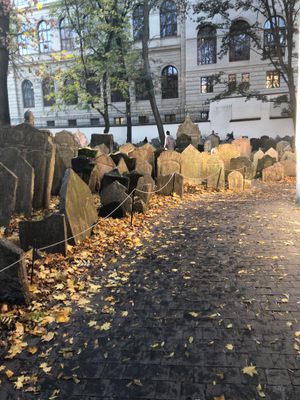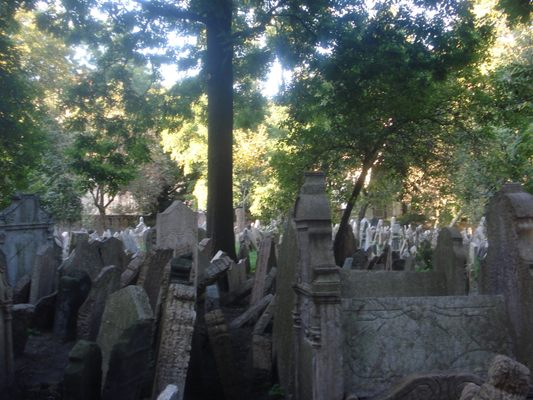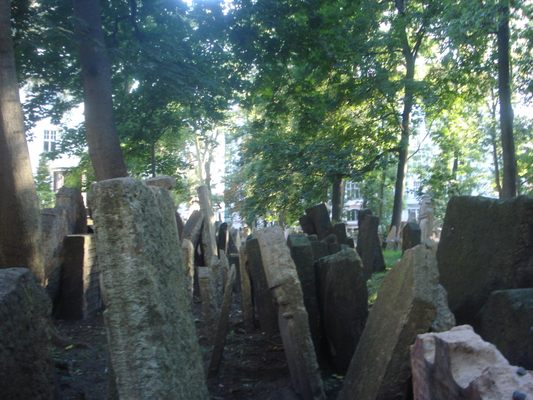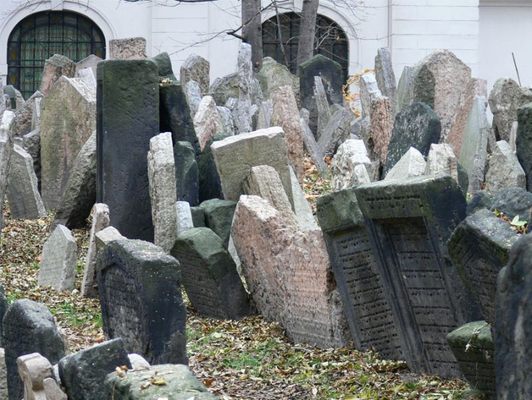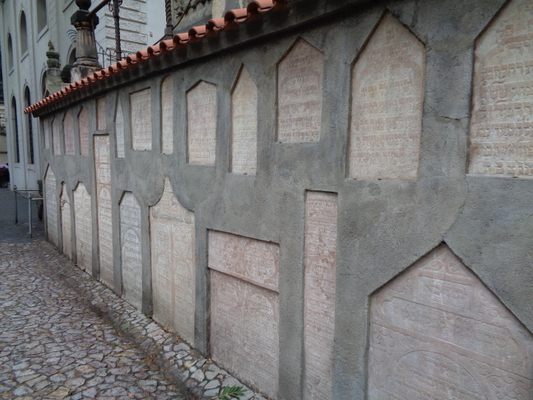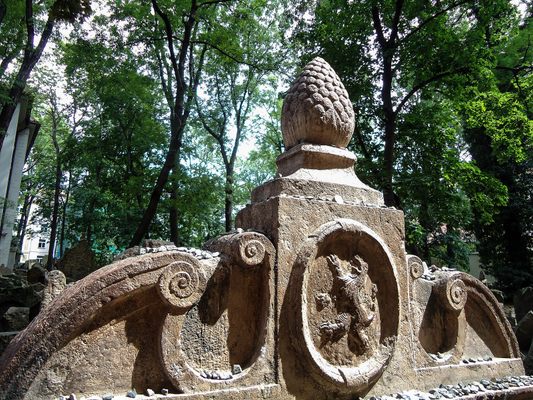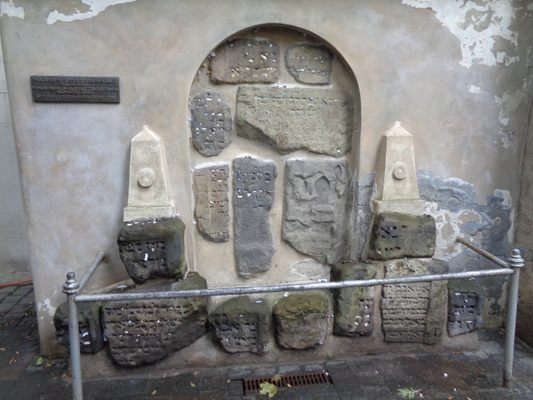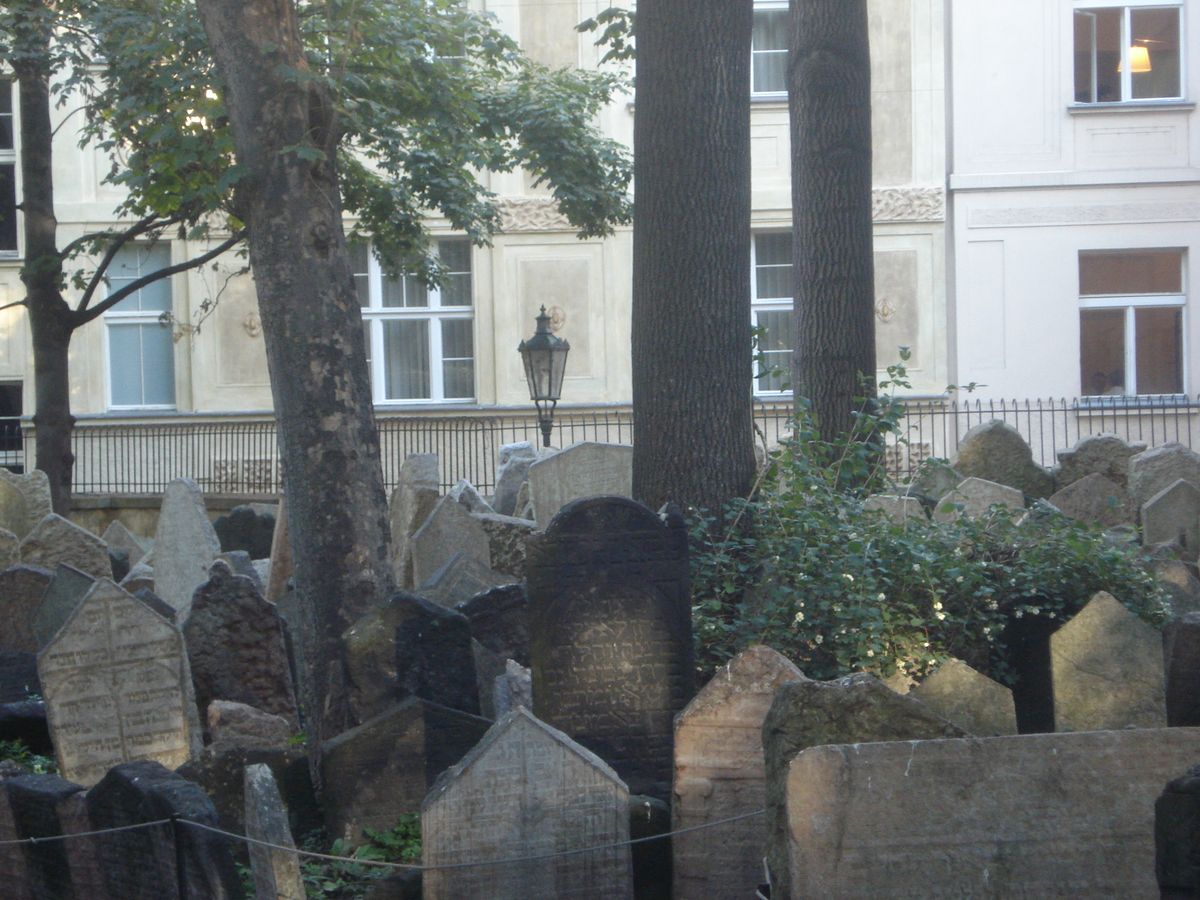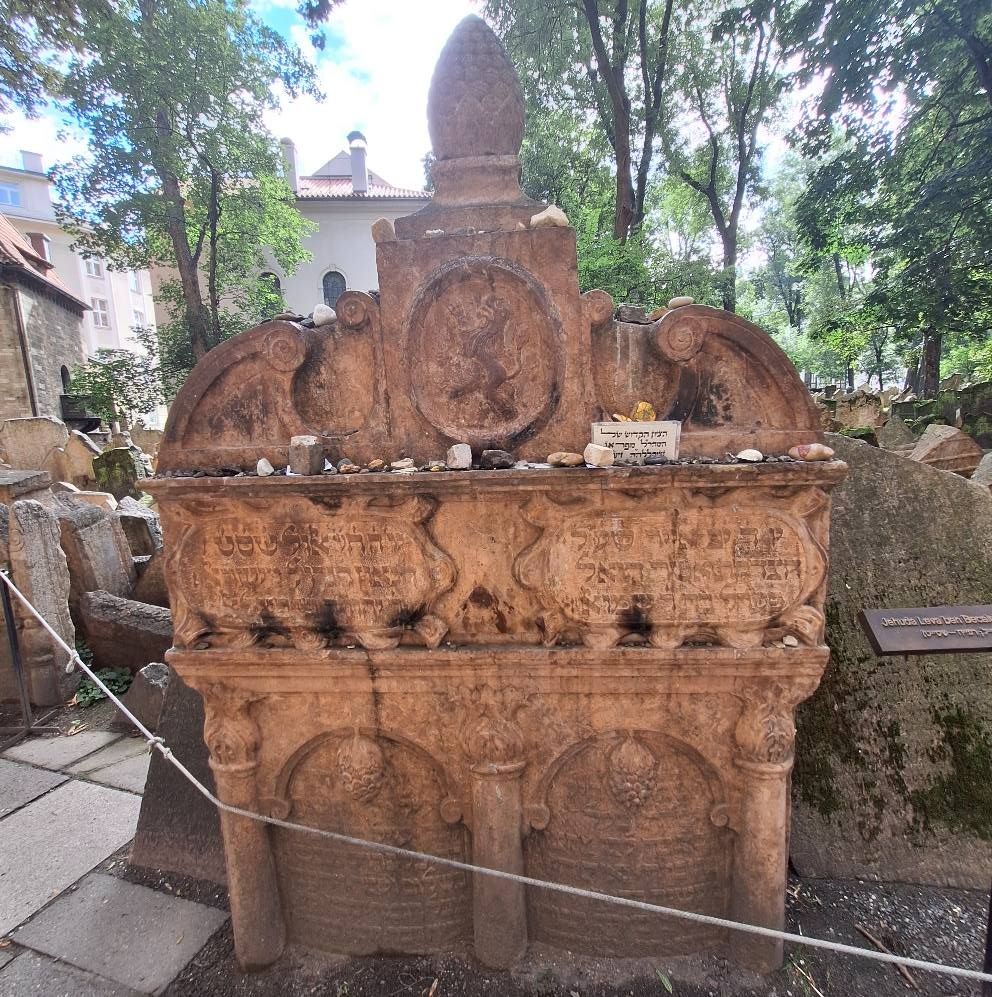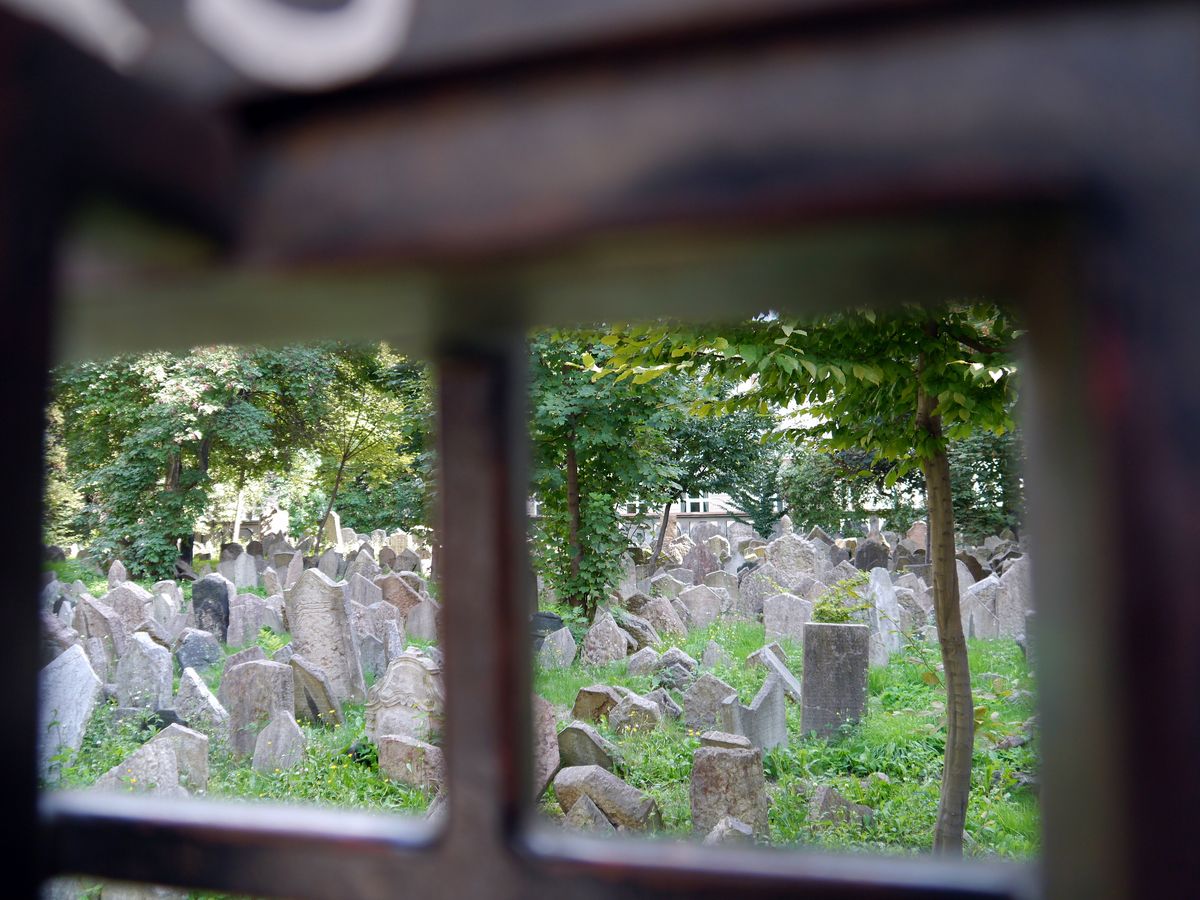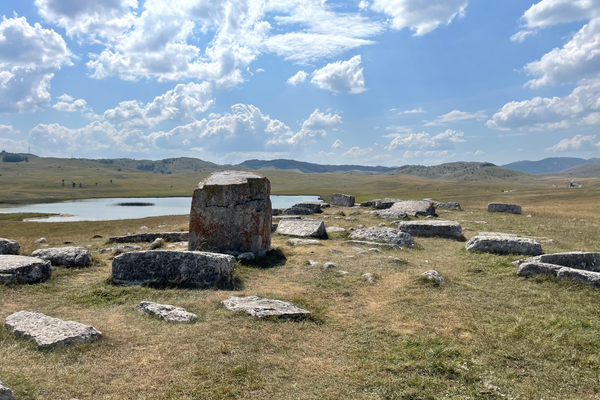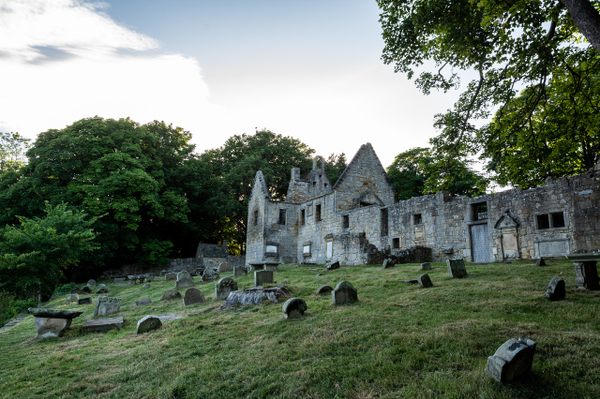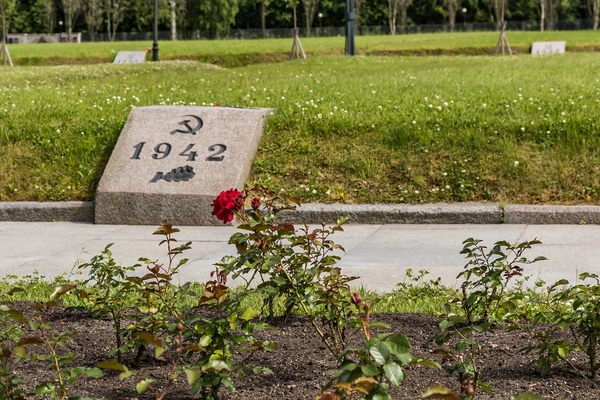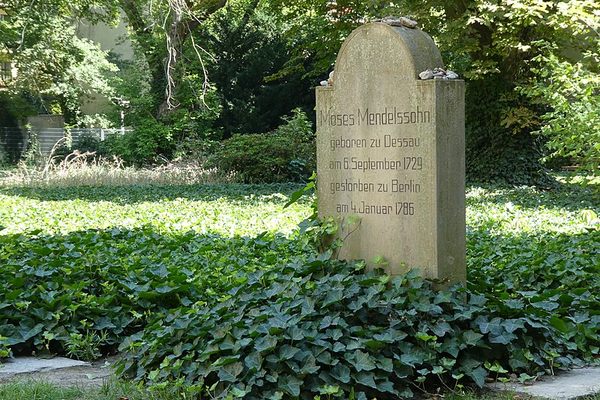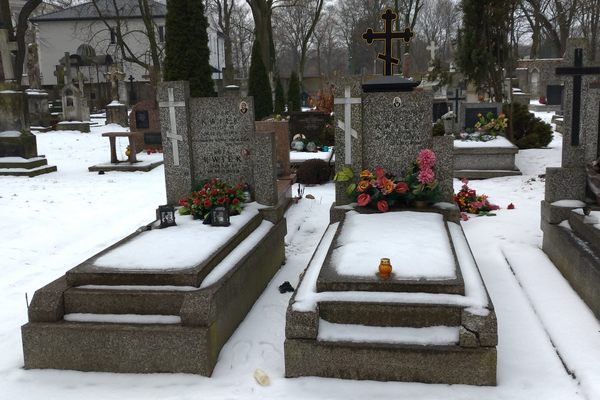About
The 12,000 headstones in the Old Jewish Cemetery are crumbling and covered with ivy, toppled and clustered together.
This was not Prague's first Jewish cemetery, but it is the oldest surviving in the city. The oldest burial date listed is 1439, though the cemetery was probably in use long before that, and the most recent burial was in 1787.
Burials ceased when a new decree prohibited interment in areas where people lived because of health risks. The notoriously dirty neighborhood of Josefov, where the Jewish cemetery is located, underwent serious cleanup and reconstruction efforts. Part of the cemetery was displaced for a new road, which meant the dead and their headstones were exhumed and stuffed into empty spaces in the already crowded plots.
There are upwards of 12,000 headstones in the cemetery, though it is speculated that as many as 100,000 individuals are buried beneath them, stacked 12 deep in some places. Jewish customs forbid the removal of old graves, so the dead were simply piled on top of one another for centuries. New dirt was even trucked in to create more earth for burials.
As Prague was a hub of Jewish scholasticism in Eastern Europe, it's no surprise that some of the foremost figures in Jewish history are buried here. Rabbi Judah Loew ben Bezalel, a central character in the myth of the golem, is buried beneath an ornate sand-colored headstone decorated with a lion. The astronomer David Gans has the Star of David and a goose on his.
These symbols appear on the headstones of common graves as well. Along with the Hebrew script denoting the person buried below, the images engraved on the stones could communicate names ("Gans" means goose in German), professions (books for cantors; scissors for tailors), and characteristic traits (grapes for a full, prosperous life; the Star of David for devout Jews).
During the Nazi occupation of Czechoslovakia, historic synagogues and other sites were destroyed, effectively erasing the physical traces of Jewish culture. However, the Old Jewish Cemetery and the thousands of artifacts collected by the Jewish Museum escaped this fate through dark but fortunate providence. It is believed that the Nazis wished to save these items for a "Museum of an Extinct Race" in Prague, which would inform people of the future about the Jewish race wiped out by the Aryans. Thankfully this museum and its subject did not come to fruition, and the cemetery, along with the artifacts of the Jewish Museum, were spared.
Today, visitors can pay their respects to the thousands buried at the Old Jewish Cemetery through tours offered by Prague's Jewish Museum. Hundreds of pebbles and prayers written on tiny papers can be found resting atop the gravestones.
The attached museum has poems and pictures drawn by children during the Nazi occupation, as well as toys.
Related Tags
Know Before You Go
Keep in mind when you visit the Jewish Quarter and all Jewish museums and sights that these are closed on Saturdays (Sabbath) and Jewish holidays. Also keep in mind that there are often queues to view the cemetery (sometimes up to an hour or more).
Tip: If you are in Prague for a few days and you plan to visit various tourist sites, purchase a Prague card. This is valid for different number of days and gives you free entry or reduction on the entry price. The cemetery can only be seen as a part of the tour and cost around €20.
Men must have their heads covered when visiting a synagogue. A yamaka is provided with purchase of a ticket. Your ticket allows you entry into both Old and New Jewish Cemetery.
Community Contributors
Added By
Edited By
hrnick, Grave with a view Marjolein, Molly McBride Jacobson, SEANETTA...
Published
January 12, 2017
Sources
- http://en.wikipedia.org/wiki/Old_Jewish_Cemetery,_Prague
- http://furtherglory.wordpress.com/2010/09/05/hitlers-proposed-museum-of-an-extinct-race/
- https://www.private-prague-guide.com/article/prague-jewish-cemetery-jewish-town-josefov/
- http://www.avantgarde-prague.com/prague-guide/things-to-see-in-prague/main-sights/old-jewish-cemetery/
- http://www.jewishmuseum.cz/en/explore/sites/old-jewish-cemetery/
- http://www.prague.cz/old-jewish-cemetery/
- http://www.prague.eu/en/object/places/688/jewish-museum-in-prague-old-jewish-cemetery-zidovske-muzeum-stary-zidovsky-hrbitov?back=1
- https://praagnunl.rgi.ticketbar.eu/nl/ticketbar-prague/prague-card-/
- https://livingprague.com/prague-attractions/prague-old-jewish-cemetery/
- https://rove.me/to/prague/old-jewish-cemetery




